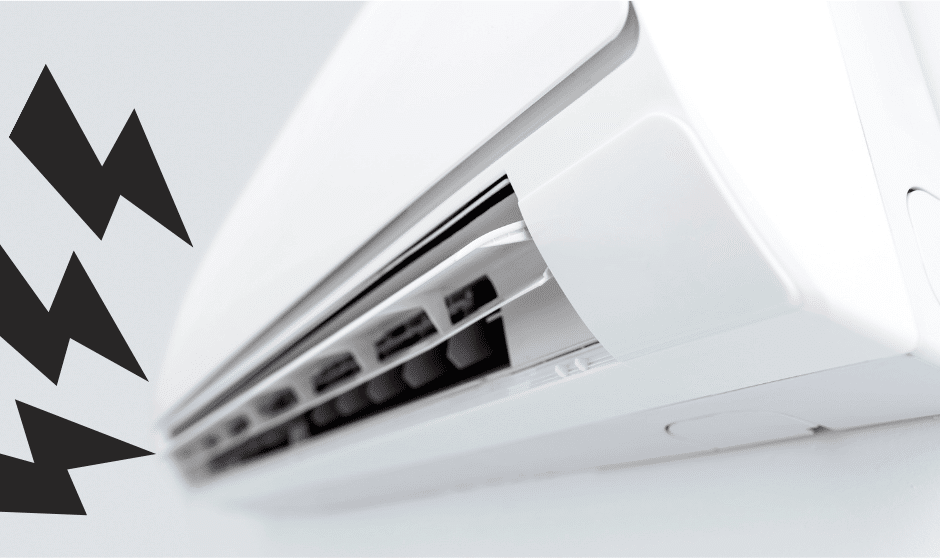How Do You Check an Air Conditioner Fuse?
BLOG CATEGORIES

140 South St., Walpole, MA 02081
P (508) 668-8200 Toll Free (877) 668-8822
info@sinclaireboston.com
Master Plumber License #9530,
Sheet Metal Master-Unrestricted #5442
Sinclaire Enterprises, Inc.
140 South St., Walpole, MA 02081
P 508.668.8200 Toll Free 877.668.8822 info@sinclaireboston.com
Master Plumber License #9530,
Sheet Metal Master-Unrestricted #5442
need service?
let us contact you
If you’re dealing with AC issues and you’ve blown a fuse, this guide will help you understand the problem and to know when to call a professional for air conditioning repair in Weston.
Where is the AC Fuse Located?
The AC fuse on most HVAC systems is typically on the unit’s control board. You’ll normally find the board behind an access panel on the unit’s lower compartment. While you sometimes have to unscrew areas to access the control board, others have clips. The fuse is usually inserted into the control board and labeled with an amp or voltage rating.
How Do I Tell if an AC Fuse Is Blown?
During the hottest months when we need our AC the most, it’s more likely that you’ll experience a system breakdown. Fuses help run air conditioners, and when the temps start to go particularly high, they can be susceptible to blowing out due to high usage.
Knowing if an air conditioner has blown a fuse is very important as part of HVAC ownership. By understanding why your AC is malfunctioning, you can avoid more significant problems that come with hefty price tags and prolong the life of your devices.

What Kind of Fuse Does an Air Conditioner Use?
Air conditioners use fuses to protect the condenser from excessive amperage, and fuses can only handle a limited amperage based on the maximum rated amount. If more amperage tries to go through, the fuse blows to prevent overheating.
Usually, AC units use “TR”-type fuses to ensure safe operation. However, if you need to replace a fuse quickly and don’t have that exact one, you can use a fuse rated for a lower amperage. Just don’t go up. A fuse capable of handling higher amperage could cause the condenser to break down because it let too much electricity pass through the unit. It could even cause permanent damage.
Why Does My AC System Keep Blowing Fuses?
Aside from excessive heat, AC units can blow fuses for several reasons, including:
- Circuit malfunction: If there is a more significant issue with your circuit, fuse box, or power supply, it can cause you to blow circuits or fuses frequently. That can mean there’s too much amperage in the power line for your systems.
- Faulty capacitor: Your capacitor is the component within your condenser that regulates electricity. You can blow a fuse when this breaks, and your unit can break down.
- Dirty filters: When your unit works too hard because of a dirty filter, it can overheat, blowing a fuse. Keep your air filters clean throughout the summer to avoid overheating.
- Loose electrical: Loose electrical components are a definite problem. When temperatures are high and electrical elements loosen, you can blow a fuse or experience a system malfunction.
Faulty condenser fans, malfunctioning compressors, incorrect refrigerant levels, and old age can also cause problems. For these, you’ll need to call a professional.
How Do I Check an Air Conditioner for a Blown Fuse?
If you think your air conditioner has blown a fuse, the first sign you’ll notice is that the outside AC unit is inoperable. The best way to check is by using a voltmeter. Use caution when working with any electrical equipment. That said, let’s dive into the steps you should take to look for a blown fuse using the voltmeter:
- Locate your disconnect: There will usually be a gray box mounted to your home near the outdoor condenser unit. That’s your disconnect.
Open the disconnect: Open the disconnect’s cover by lifting or swinging it to the open position. - Expose the wiring: You should see another cover inside that protects the wiring after opening the disconnect. Pop this out to expose the wiring beneath.
- Locate the wires: Once exposed, locate the incoming and outgoing wires by identifying the labels “line” (incoming) and “load” (outgoing). Both wires carry 110 volts.
- Set your meter: Set your voltmeter to the voltage (V) setting and ensure the display says “0” volts.
- Place the leads: Take your voltmeter’s wires and attach them to your disconnect’s lugs or screws. Now, put the red lead on the black “line” wire’s lug and the black lead on the lug of the white “line” wire.
- Read the voltage: You should see a number between 220 and 240. If you see this, power is coming into the disconnect to your fuses. If you don’t see anything, there may be a problem with your breaker panel. To solve that, a trained professional will have to repair it.
- Test the load: If you saw a voltage reading during the previous step, do the same test on the “load” side of the fuses. If you have blown a fuse, you’ll see a voltage reading on the “line” side but not the “load” side.
What if I Don’t Have a Voltmeter?
If you don’t have a voltmeter, you can choose to replace the fuses by picking up the size you need. Replacing your fuses is fairly simple. However, if you don’t feel comfortable doing it, contact one of our air conditioning repair specialists.
When Should I Contact Air Experts for AC Repair Services?
If all this sounds too complicated, don’t worry. Our team of trained air conditioner repair technicians is here to help. We have decades of combined experience and can provide Easton air conditioning repair and Needham air conditioning service. Our HVAC repair professionals will get to the bottom of your blown fuse quickly and for a great price.
OUR SERVICE AREAS
- Ashland, Ma
- Attleboro, Ma
- Bellingham, Ma
- BLACKSTONE, MA
- BRIDGEWATER, MA
- Canton, Ma
- Dedham, Ma
- Dover, Ma
- EAST BRIDGEWATER, MA
- Easton, Ma
- Foxborough, Ma
- Framingham, Ma
- Franklin, Ma
- Holliston, Ma
- HOPEDALE, MA
- Hopkinton, Ma
- Mansfield, Ma
- Medfield, Ma
- Medway, Ma
- MENDON, MA
- MILFORD, MA
- MILLIS, MA
- MILLVILLE, MA
- MILTON, MA
- NATICK, MA
- NEEDHAM, MA
- NEWTON, MA
- NORFOLK, MA
- NORTH ATTLEBORO, MA
- NORTON, MA
- NORWOOD, MA
- PLAINVILLE, MA
- RANDOLPH, MA
- SHARON, MA
- SHERBORN, MA
- STOUGHTON, MA
- SUDBURY, MA
- TAUNTON, MA
- WALPOLE, MA
- WAYLAND, MA
- WELLESLEY, MA
- WEST BRIDGEWATER, MA
- WEST ROXBURY, MA
- WESTON, MA
- WESTWOOD, MA
- WRENTHAM, MA
AFFILIATIONS





